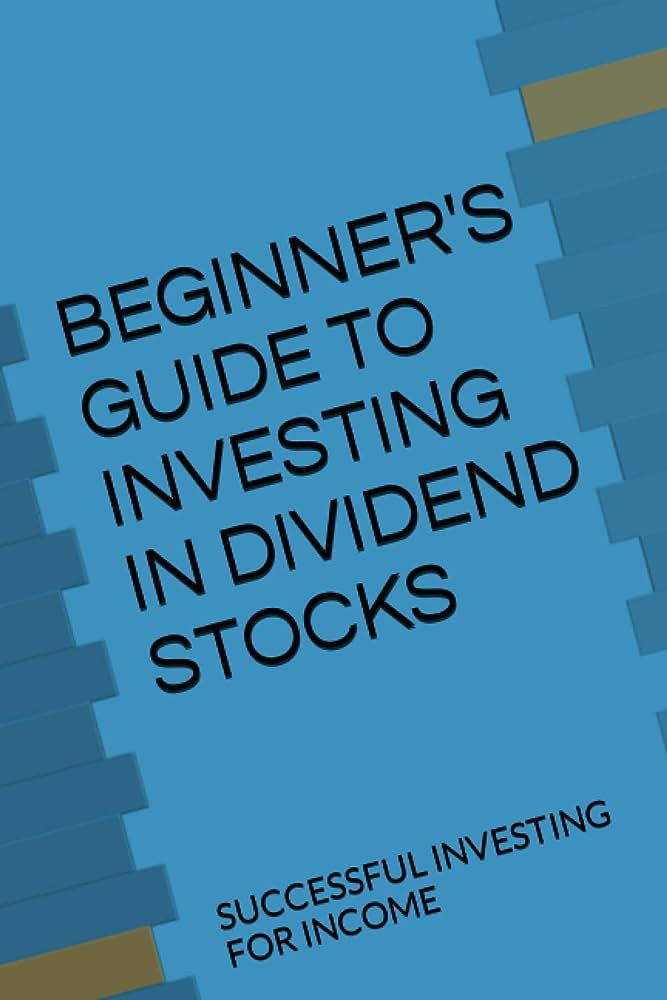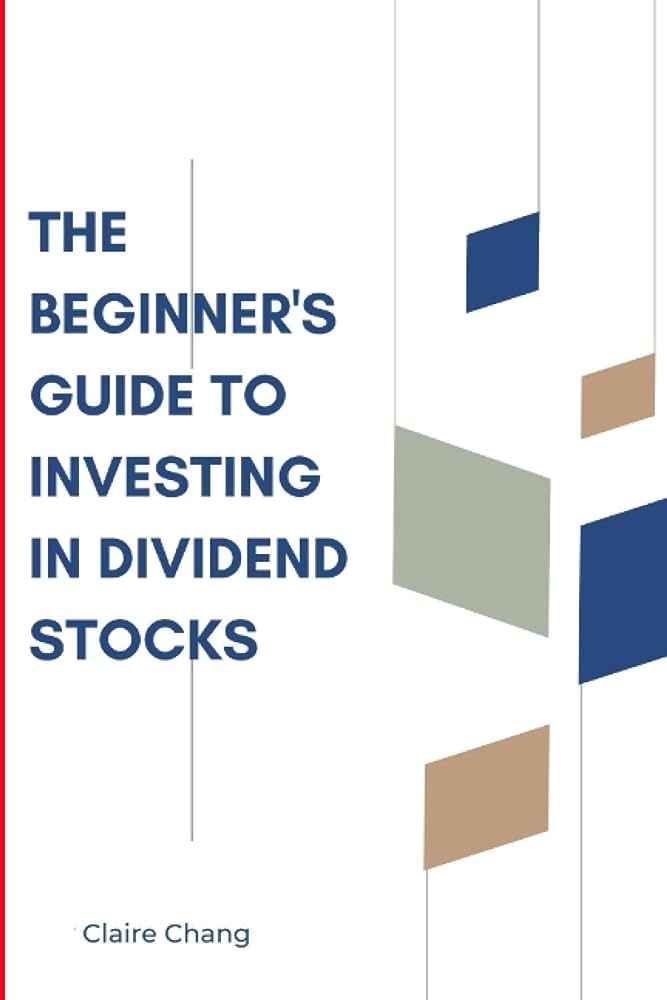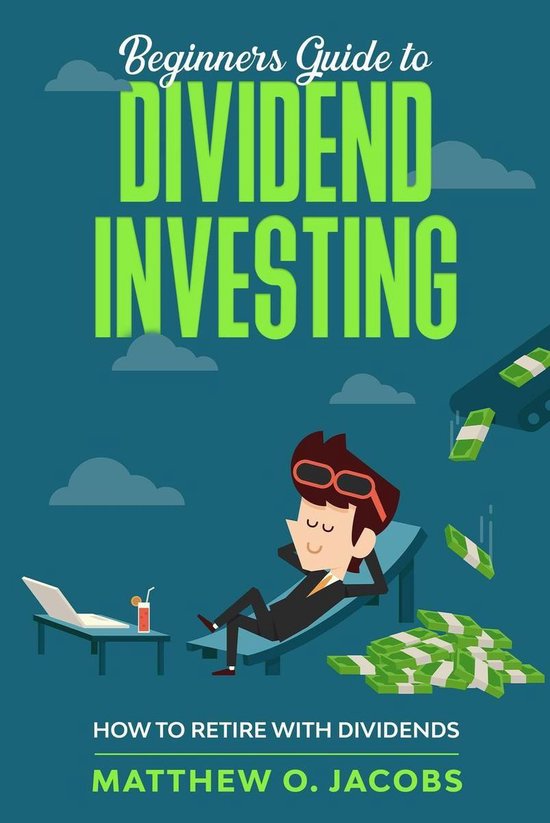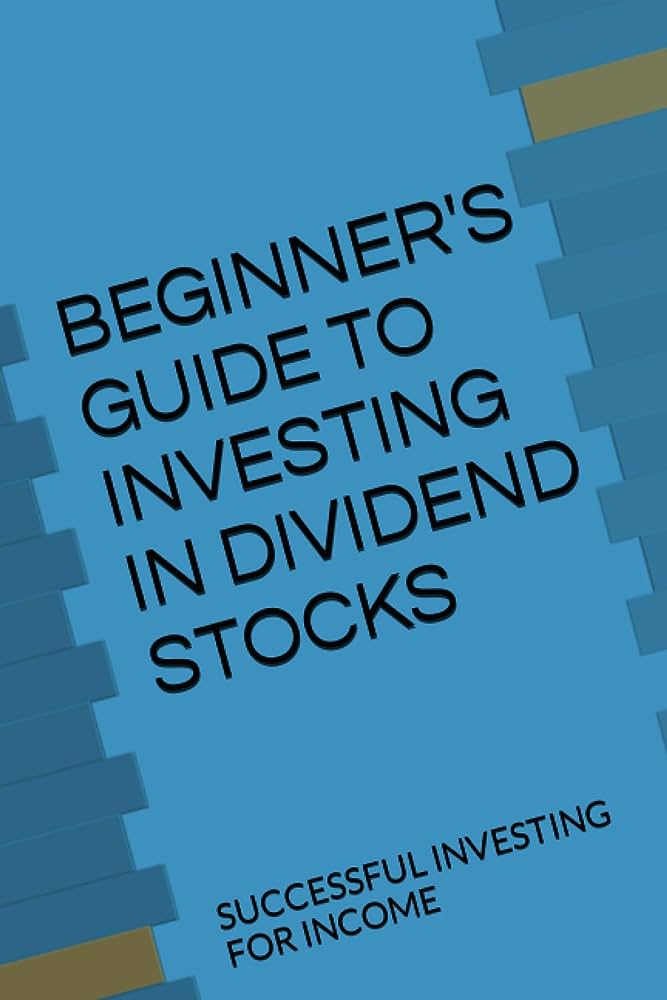So you’ve decided to venture into the world of investing, specifically in dividend stocks? Great choice! In this beginner’s guide, we’ll walk you through the basics of investing in dividend stocks and help you build a strong foundation for your investment journey.
When it comes to investing in dividend stocks, the first and most important step is to understand what they actually are. In simple terms, dividend stocks are shares of companies that distribute a portion of their profits to shareholders on a regular basis. These distributions, known as dividends, can provide a steady stream of income for investors. But before you dive into the market, it’s crucial to do your research and figure out which dividend stocks align with your investment goals and risk tolerance. Once you’ve done that, you can start building a diversified portfolio of dividend stocks that can potentially generate both capital appreciation and regular income. Remember, investing in dividend stocks requires patience, knowledge, and a long-term perspective. So take your time, educate yourself, and always keep abreast of the latest trends and developments in the market. Happy investing!
Beginner’s Guide to Investing in Dividend Stocks

This image is property of Amazon.com.
Understanding Dividend Stocks
When it comes to investing, dividend stocks offer a unique opportunity for individuals to generate a stream of income. But what exactly are dividend stocks? In simple terms, dividend stocks refer to shares of companies that distribute a portion of their profits to shareholders in the form of dividends. These dividends are typically paid on a regular basis, such as quarterly or annually, and can provide a consistent source of income.
What are Dividend Stocks?
Dividend stocks are shares of companies that have a history of regularly distributing a portion of their profits to shareholders. By investing in dividend stocks, individuals become part owners of these companies and are entitled to receive a share of the company’s earnings. Dividend payments are often made in the form of cash, but some companies also offer dividend reinvestment plans, allowing shareholders to reinvest their dividends to purchase additional shares.
Advantages of Investing in Dividend Stocks
Investing in dividend stocks offers several advantages that make them an attractive option for both beginners and seasoned investors. Firstly, dividend stocks provide a regular income stream, which can be particularly beneficial for retirees or individuals looking to supplement their existing income. Additionally, dividend payments can provide a sense of stability, as companies that consistently pay dividends often exhibit financial strength and profitability. Furthermore, dividend stocks have the potential for capital appreciation, allowing investors to benefit from both income and growth.
Types of Dividend Stocks
There are different types of dividend stocks that investors can consider, each with its own characteristics and potential benefits. One common type is known as blue-chip stocks, which refers to shares of large, well-established companies with a history of stable dividends. These companies are often seen as safer investments due to their market dominance and reliable financial performance. Another type is known as dividend growth stocks, which are shares of companies that consistently increase their dividend payments over time. These stocks can provide a growing income stream, as well as potential capital appreciation.
Factors to Consider Before Investing
Before diving into dividend investing, it is crucial to consider various factors that can impact your investment decisions. These factors will help you align your investment strategy with your financial goals and risk tolerance.
Financial Goals and Risk Tolerance
Understanding your financial goals is essential when investing in dividend stocks. Are you investing for income, growth, or a combination of both? Determining your objectives will help guide your investment choices and portfolio management. Additionally, assessing your risk tolerance is vital, as dividend stocks, like any investment, come with a certain level of risk. Some investors may opt for more conservative dividend stocks, while others may be comfortable with higher-risk, high-yield options.
Researching Dividend-Paying Companies
Thorough research is fundamental when selecting dividend-paying companies to invest in. Start by examining a company’s financial health, stability, and track record of dividend payments. Look for companies with consistent revenue and earnings growth, as well as a history of maintaining or increasing dividends, even during economic downturns. It is also essential to assess the company’s competitive advantages, market position, and industry outlook, as these factors can influence its ability to sustain dividend payments over the long term.
Evaluating Dividend Yield and Payout Ratio
Two crucial metrics to consider when evaluating dividend stocks are dividend yield and payout ratio. Dividend yield represents the annual dividend payment as a percentage of the stock price. Higher dividend yields may indicate attractive income potential. However, it is important to assess whether the dividend yield is sustainable and not artificially inflated due to a declining stock price. The payout ratio, on the other hand, measures the portion of a company’s earnings paid out as dividends. A lower payout ratio suggests that a company has more room to increase dividends in the future.
Assessing Dividend Growth
Investors should also consider the potential for dividend growth when selecting dividend stocks. Companies that consistently increase their dividends over time demonstrate a commitment to rewarding shareholders and can provide a growing stream of income. Examining the company’s historical dividend growth rate and its ability to generate sufficient cash flow for future dividend increases can give investors insights into its capacity for sustained dividend growth.

This image is property of Amazon.com.
Building a Dividend Portfolio
Building a well-diversified dividend portfolio is key to managing risk and maximizing potential returns. A diversified portfolio consists of investments across different sectors and industries, reducing the impact of individual company or sector-specific risks.
Diversification
Diversification involves spreading investments across different types of dividend stocks, such as blue-chip stocks, dividend growth stocks, and even dividend-focused exchange-traded funds (ETFs). Additionally, diversify across sectors such as technology, healthcare, consumer goods, etc. By diversifying your dividend holdings, you can mitigate the risk of relying too heavily on a single company or industry.
Choosing the Right Brokerage Account
Selecting the right brokerage account is crucial for building and managing your dividend portfolio. Look for a brokerage that offers a wide range of dividend-paying stocks and provides research tools and educational resources to help you make informed investment decisions. Consider factors such as account fees, trading commissions, and the availability of dividend reinvestment plans (DRIPs), which allow you to reinvest your dividends automatically.
Strategies for Portfolio Allocation
Determining how much to allocate to different dividend stocks is a strategic decision that depends on your risk tolerance, financial goals, and investment horizon. Some investors opt for a more conservative approach, allocating a higher percentage to stable, blue-chip dividend stocks. Others may be willing to take on more risk by allocating a portion of their portfolio to dividend growth stocks, which have the potential for higher income and capital appreciation. Finding the right balance for your dividend portfolio is essential for long-term success.
Analyzing Dividend Stocks
Analyzing dividend stocks requires a thorough evaluation of various factors to assess their potential for sustainable dividends and capital growth.
Earnings and Revenue Trends
Examining a company’s earnings and revenue trends is critical when analyzing dividend stocks. Consistent growth in earnings and revenue indicates a healthy and profitable company with the potential to sustain dividend payments. Look for companies that have demonstrated a track record of increasing earnings and revenue over time, as these indicate the company’s ability to generate sufficient cash flow to support dividend payments.
Dividend Sustainability
Assessing the sustainability of dividends is essential to ensure that companies can continue to pay dividends in the long run. It is important to consider factors such as the company’s cash flow, debt levels, and ability to generate consistent profits. Companies with excessive debt or declining cash flow may face challenges in maintaining dividend payments. Additionally, dividends that exceed earnings can be unsustainable in the long term. Analyzing a company’s payout ratio and dividend history can provide insights into the sustainability of its dividends.
Stability of Company and Industry
Stability plays a crucial role in dividend investing. Investing in companies with stable business models and a strong market position can help ensure consistent dividends. Consider factors such as the company’s competitive advantages, customer base, and industry trends. Industries with stable demand and a history of reliable dividends, such as utilities or consumer staples, may offer more stability compared to industries that are prone to significant fluctuations.
Debt and Cash Flow Analysis
Analyzing a company’s debt and cash flow is essential to evaluate its ability to sustain dividend payments. Excessive debt levels can hinder a company’s financial flexibility and put dividend payments at risk, especially during challenging economic times. It is important to assess a company’s debt-to-equity ratio and cash flow generation to determine its financial health and ability to meet dividend obligations.

This image is property of Amazon.com.
Executing Dividend Stock Trades
Executing dividend stock trades involves making strategic decisions regarding buying, timing, and reinvesting dividends.
Buy and Hold Strategy
Many dividend investors follow a buy and hold strategy, aiming to hold dividend stocks for the long term. This strategy allows investors to benefit from both dividend income and potential capital appreciation. By holding stocks for longer periods, investors can also benefit from compounding dividends, which can significantly enhance total returns over time.
Timing Dividend Stock Purchases
Timing in investing is a challenging endeavor, and the same applies to dividend stock purchases. Instead of trying to time the market, focus on selecting high-quality dividend stocks at reasonable valuations. Look for companies with strong fundamentals and stable dividend histories rather than trying to make short-term market predictions. A long-term investment approach is often more effective in generating consistent income and potential capital growth.
Understanding Dividend Payment Dates
Dividends are typically paid on specific dates known as dividend payment dates. It is crucial to understand these dates, as they determine when shareholders will receive their dividend payments. Investors should be aware of the dividend declaration date, ex-dividend date, record date, and payment date. Being knowledgeable about these dates will help ensure that you are eligible to receive dividends and allow you to plan your investment strategy accordingly.
Reinvesting Dividends
Dividend reinvestment refers to the practice of using dividends received to purchase additional shares of the same dividend-paying stock. Reinvesting dividends can be an effective way to compound returns over time, as it allows investors to purchase additional shares without incurring trading commissions. Consider whether a company offers a dividend reinvestment plan (DRIP) or work with your brokerage to set up automatic reinvestment of dividends.
Considerations for Taxation
Understanding the tax implications of dividend income is crucial for effectively managing your investment returns.
Tax Implications of Dividend Income
Dividend income is generally subject to income tax, which means you may owe taxes on the dividends you receive. However, the tax treatment of dividends depends on various factors, including the type of dividend and your tax bracket. Dividend income is typically classified as either qualified or non-qualified, with different tax rates applied to each. It is important to consult with a tax professional or refer to relevant tax regulations to understand your specific tax obligations.
Qualified vs. Non-Qualified Dividends
Qualified dividends receive more favorable tax treatment compared to non-qualified dividends. Qualified dividends are subject to a lower tax rate, similar to long-term capital gains tax rates. On the other hand, non-qualified dividends are taxed at your ordinary income tax rate. The classification of dividends as qualified or non-qualified depends on factors such as the holding period of the stock and the company’s eligibility for certain tax benefits.
Tax-efficient Investing Strategies
Investors can employ various tax-efficient investing strategies to maximize after-tax returns from their dividend investments. Strategies such as holding dividend stocks in tax-advantaged accounts like Individual Retirement Accounts (IRAs) or 401(k) plans can defer taxes on dividends until withdrawals are made. Additionally, tax-loss harvesting can help offset taxable dividend income by selling investments at a loss, thereby reducing overall tax liabilities.

This image is property of Amazon.com.
Monitoring and Adjusting Your Portfolio
Monitoring and adjusting your dividend portfolio is crucial to ensure that your investments align with your financial goals and market conditions.
Tracking Dividend Performance
Regularly tracking the performance of your dividend stocks is essential in evaluating the success of your portfolio and making informed decisions. Monitor dividend payments, dividend growth rates, and overall portfolio yield. It is also important to compare your portfolio’s performance to relevant benchmarks or indices to assess its relative performance.
Examining Company Updates and News
Stay informed about the companies you invest in by regularly examining company updates, financial reports, and relevant news. Changes in a company’s financial health or dividend policies can impact your investment. Monitor earnings releases, annual reports, and news releases to stay up to date with any significant developments that may affect your dividend stocks.
Rebalancing and Selling Stocks
Rebalancing your dividend portfolio involves periodically adjusting your asset allocation to maintain your desired risk and return profile. As the performance of individual dividend stocks varies over time, rebalancing allows you to realign your portfolio to your targeted allocation. Additionally, periodic reassessment of your dividend stocks can help identify underperforming investments that may need to be sold to minimize losses or free up capital for better opportunities.
Risks and Challenges of Dividend Investing
While dividend investing offers many benefits, it is important to be aware of the potential risks and challenges associated with this investment strategy.
Market Volatility
Like any investment, dividend stocks can be subject to market volatility. Stock prices can fluctuate significantly, potentially affecting the overall value of your dividend portfolio. It is important to be prepared for market downturns and evaluate the long-term fundamentals of the companies you invest in, rather than making impulsive decisions based on short-term market movements.
Changes in Dividend Policies
Companies can change their dividend policies based on various factors, such as changes in financial performance, investment opportunities, or economic conditions. Dividend cuts or suspensions can occur, which can impact your income stream and overall investment returns. Conducting thorough research on companies’ historical dividend track records and financial stability can help mitigate the risk of unexpected dividend policy changes.
Impact of Interest Rates
Interest rates can have an impact on dividend stocks, particularly those in interest rate-sensitive sectors such as utilities or real estate investment trusts (REITs). When interest rates rise, dividend yields may become less attractive in comparison, potentially affecting investor demand for dividend stocks. Consider the potential impact of interest rate changes on your dividend holdings and diversify your portfolio accordingly.

This image is property of media.s-bol.com.
Resources for Dividend Stock Investors
As a dividend stock investor, it is important to have access to reliable and up-to-date information and resources that can enhance your investment decisions.
Financial News and Websites
Financial news outlets, such as CNBC, Bloomberg, or The Wall Street Journal, provide valuable insights and news updates on dividend stocks and the broader financial markets. These sources can help you stay informed about market trends, company developments, and economic factors that may impact your dividend investments.
Dividend-focused Investment Newsletters
Subscription-based investment newsletters that focus on dividend investing can provide valuable research and analysis on dividend stocks. These newsletters often offer in-depth analysis, stock recommendations, and portfolio strategies to help investors make informed investment decisions. Look for reputable newsletters with a track record of providing valuable insights.
Conclusion
Investing in dividend stocks can be a rewarding strategy for individuals seeking a regular income stream and potential capital appreciation. By understanding the fundamentals of dividend investing, considering factors such as financial goals and risk tolerance, and conducting thorough research on dividend-paying companies, investors can build a diversified dividend portfolio that aligns with their investment objectives. Monitoring and adjusting the portfolio, while being aware of the risks and challenges, can help ensure a successful dividend investing journey, leading to the long-term benefits associated with dividend stocks.












